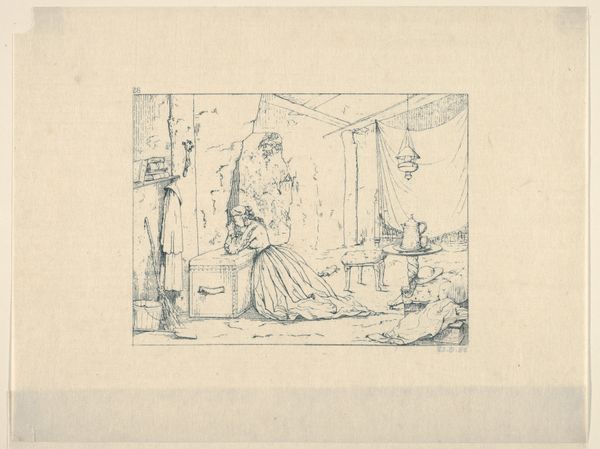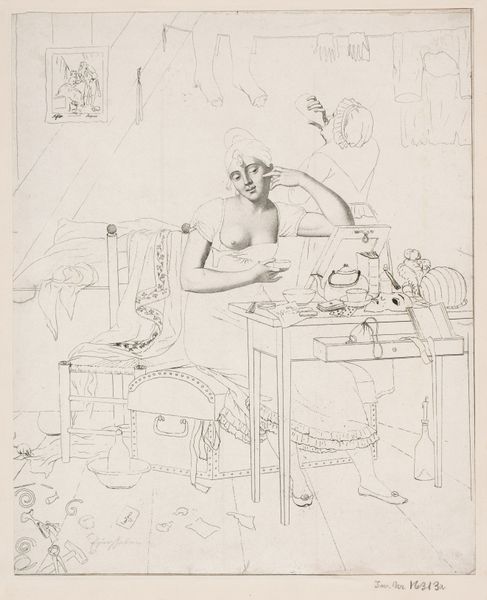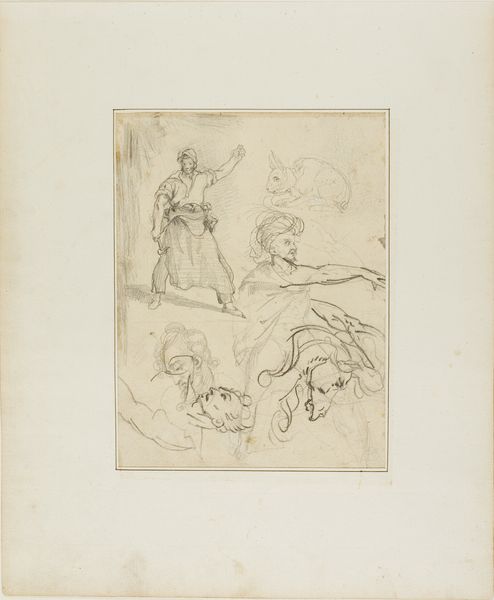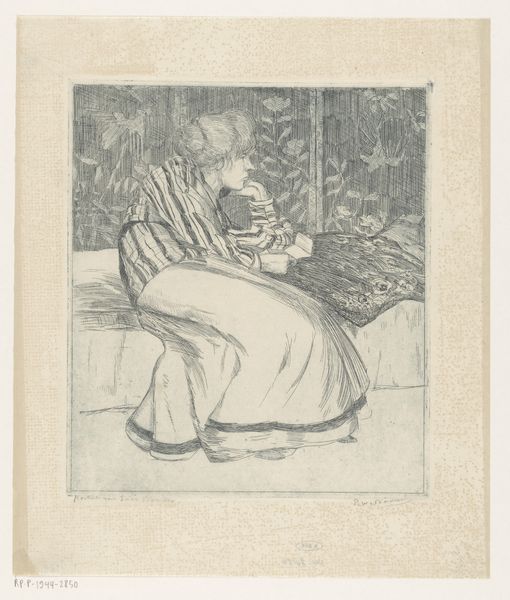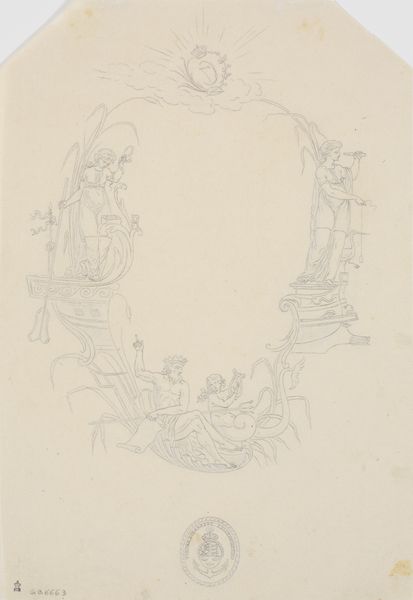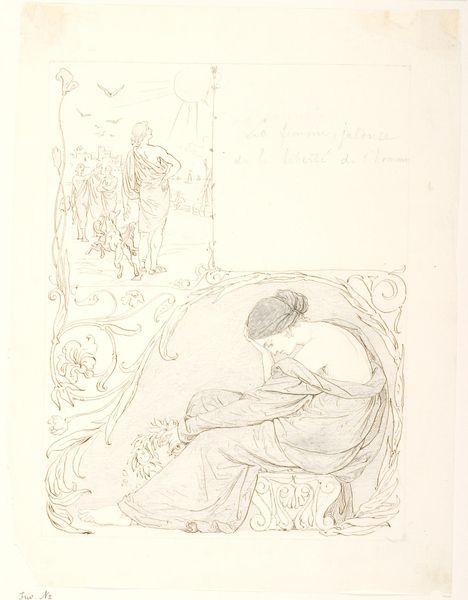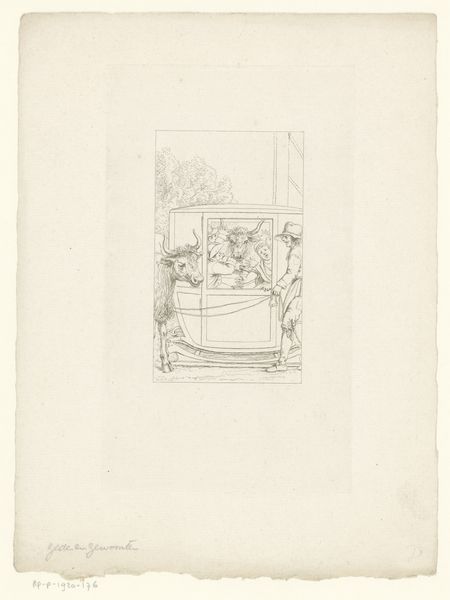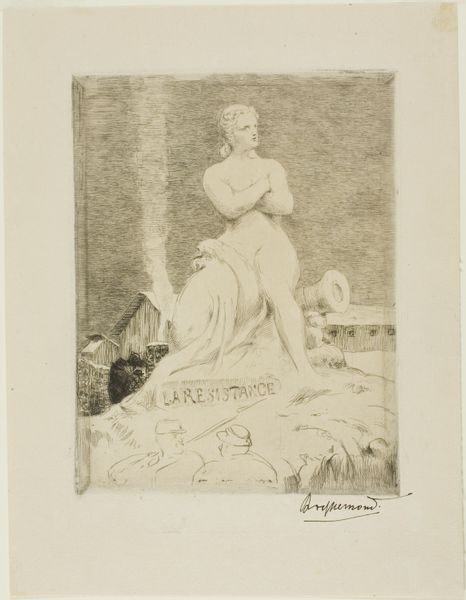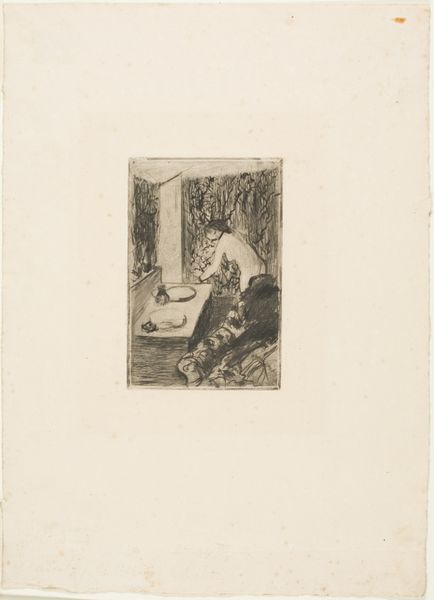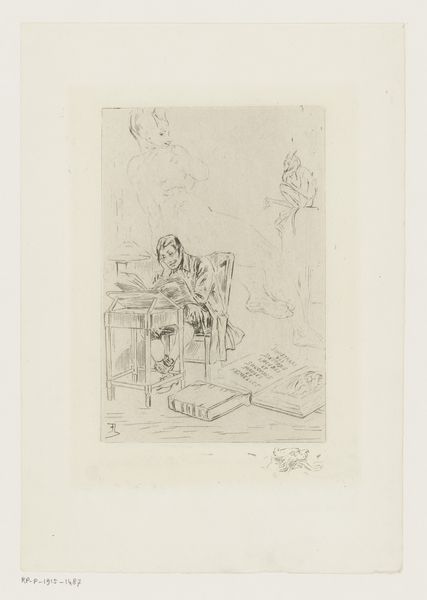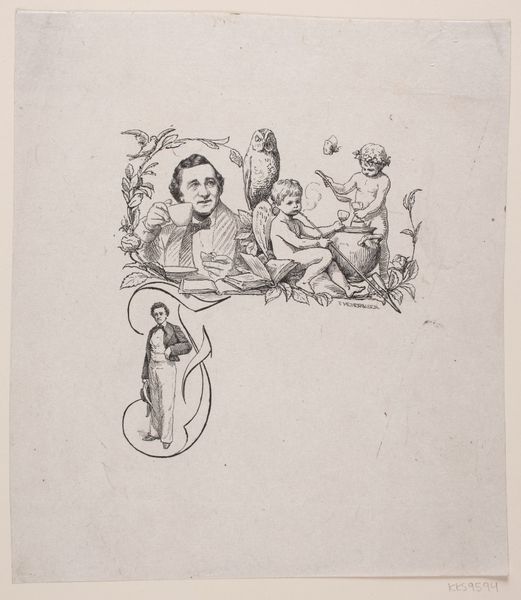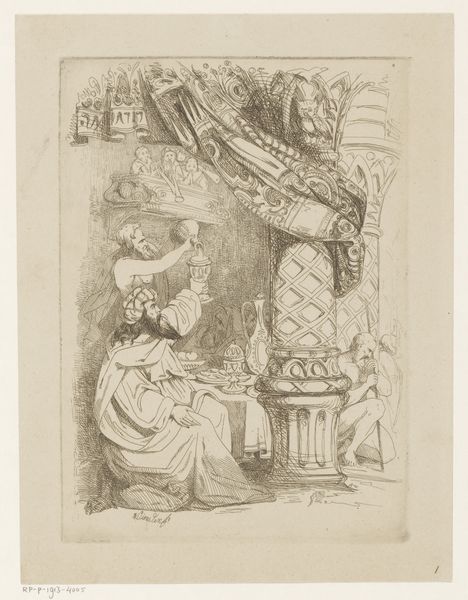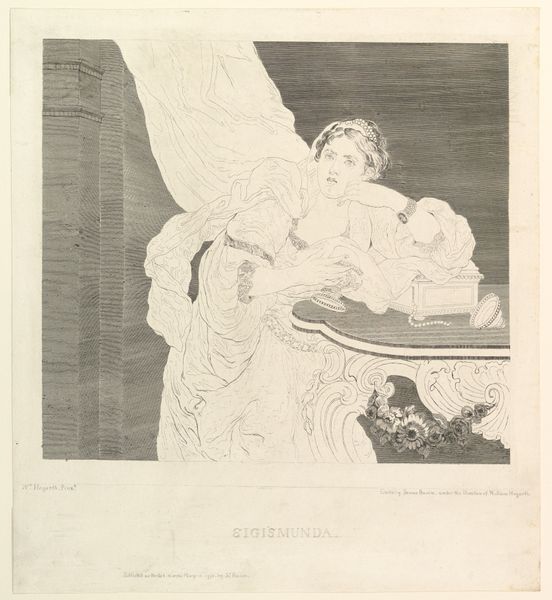
drawing, print, etching
#
portrait
#
drawing
#
art-nouveau
# print
#
etching
#
etching
#
figuration
#
france
Dimensions: 11 3/8 × 8 1/4 in. (28.89 × 20.96 cm) (plate)18 3/16 × 12 1/8 in. (46.2 × 30.8 cm) (sheet)
Copyright: No Copyright - United States
Curator: We’re looking at "Women with a Puppet," an etching created sometime between 1900 and 1905 by an anonymous artist. It’s currently held at the Minneapolis Institute of Art. Editor: My first thought is how incredibly delicate the line work is. It gives the whole image this almost ethereal, ghostly quality, like a memory fading at the edges. Curator: The delicacy certainly belies the potential social critique embedded here. The female figure, rendered nude from the waist up, is raising what appears to be a puppet above a decorated surface with a bas-relief of dancing figures, itself supported by an image and inscription that are reminiscent of stage set. The puppet could symbolize a myriad of social and political themes: manipulated power structures, female subjugation, performance and authenticity in a male-dominated space. Editor: It's interesting to see the anonymous artist grapple with these power dynamics through the medium of etching, which itself has a history of both fine art and mass reproduction. What role do you see this work playing within the wider history of French art during that period? Curator: The print's exploration of gender and performance invites consideration alongside feminist discourse, questioning not only the woman's agency, but also the art world’s role in constructing female archetypes, potentially in alignment with contemporaneous debates around female representation. There is that troubling, yet interesting choice to include an incomplete bust resembling those created of powerful political figures such as Roman emperors. I see here potential allegories regarding woman and political agency, art, stage and public spectacle. Editor: So you're suggesting the artist is subtly undermining traditional patriarchal imagery. Curator: Perhaps. It could also be interpreted as a statement about the theater, and the blurred lines between performer and puppet in the social theater, as we now call it, where women negotiate prescribed roles. There's definitely a layered commentary happening here. Editor: What do you make of the sphinx supporting the ledge the puppet seems staged on? It certainly enhances the dreamlike quality, as if everything that we see is staged. Curator: The sphinx and stage bust could represent obscured figures from French colonialism during that time, but due to the limits of detail given with etching it's more evocative, it's possible we could project any narrative of historical injustice onto those vague backgrounds that exist within this etching. The effect ultimately leaves more open to interpretation, particularly with respect to race, empire, gender, and power during the late 19th century. Editor: It seems like this work offers us a tantalizing, albeit shadowy, invitation into some of the hidden complexities underpinning Parisian social and political life at the turn of the century. Curator: Indeed. And its power lies in the understated way it challenges our assumptions.
Comments
minneapolisinstituteofart about 2 years ago
⋮
The Belgian Symbolist painter Felicien Rops explored the age-old theme of the Power of Women in six or seven drawings and watercolors from the 1870s depicting Woman with a Puppet. For Rops, an artist whose works frequently crossed the line from erotic to pornographic, women’s domination over men came from their sexual cunning. In this version he represents a bare-breasted woman holding a fan in one hand and a feeble ragdoll high above her head in the other; she presents the puppet at a kind of pagan altar like a lamb to the slaughter. The Latin inscriptions, “Where is the woman'” [UBI MULIER'] and “Here is the man” [ECCE HOMO] spell out the symbolism of the scene. Rops’s other versions of the subject show the woman disemboweling the puppet with a bloodied knife or shaking coins out of his slashed body. Rops’s various renditions of Woman with a Puppet proved so popular, a number of reproductive prints were made, including a color etching and aquatint by Albert Bertrand, and three different heliogravures, two in color, one of which appeared in Octave Uzanne’s book Son Altesse la femme (1885). In 1877 the artist, in a letter to Maurice Bonvoisin, an illustrator, friend, and collector of his work, is recorded refusing to make another version of the Woman with a Puppet to be reproduced in print. Responding to Bonvoisin’s request Rops wrote, “I do not care at all, not at all, my dear Maurice, to make you reproductions of work already published.” He called out Lady with a Puppet four times in the long missive, ending with a postscript, “Note that I will not repeat the Lady with a Puppet (La Dame au Pantin) because twice. . . I think it’s enough.” After Rops died, the Librairie Floury in Paris published a number of new prints after Felicien Rops, including a La femme au pantin engraved in black by Albert Bertrand, and priced at 50 francs in 1905. The Minneapolis print might be this work, although the flatness of the ink on the page suggests it was made through a lithographic process rather than an intaglio one. By
Join the conversation
Join millions of artists and users on Artera today and experience the ultimate creative platform.
